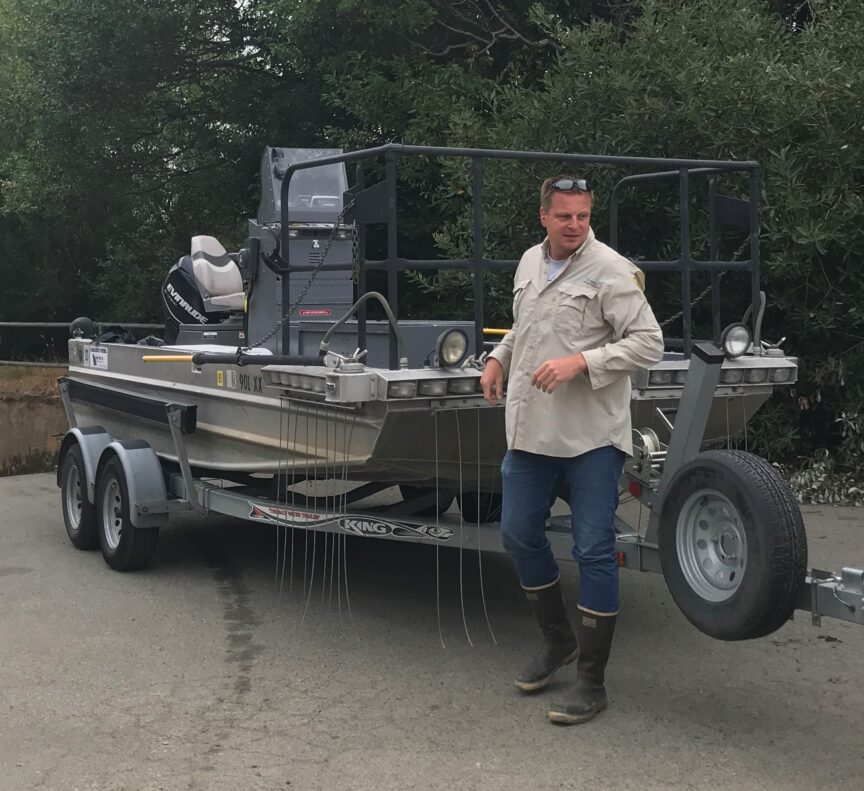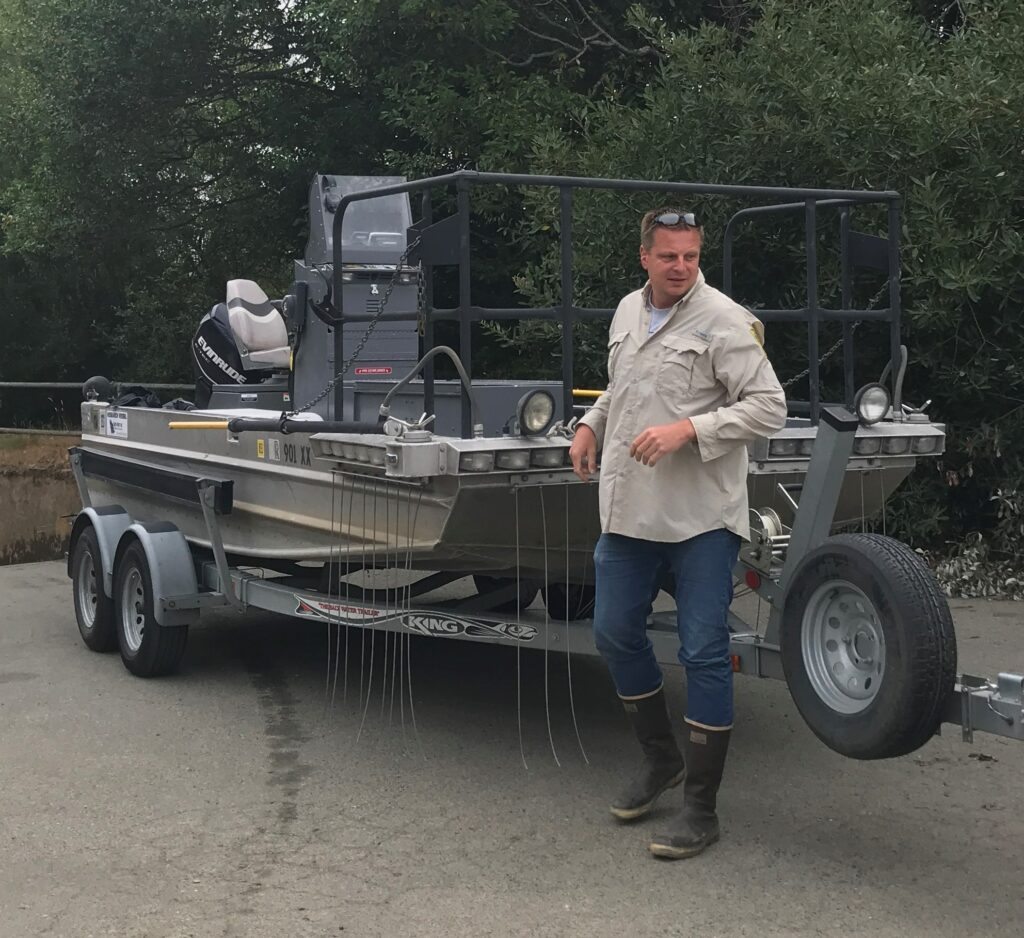
As our Oregon Engagement Manager Sophia Kaelke wrote about recently, she and I joined staff from the Oregon Department of Fish and Wildlife two weeks ago for the annual Bass Blitz on the Coquille River. The Coquille is one of Oregon’s finest salmon and steelhead waters, but the populations of these fishes here have declined dramatically. While this downward trend is likely influenced by multiple factors, the growing presence of non-native smallmouth bass in the Coquille is of particular concern.
It’s also one of the factors we may be able to do something about.
The week-long Bass Blitz is a collaborative effort to better understand the smallmouth bass phenomenon in the Coquille, including how many smallmouths there are and how much they are chowing down on juvenile salmon and steelhead. The Blitz brought together biologists and staff from ODFW, the Bureau of Land Management, and Wild Steelheaders to gather population data on predacious smallmouth bass and the extent to which these and other non-native species adversely affect, in particular, the Coquille’s imperiled fall chinook salmon population.
After the Blitz, my son and I were invited to help with further research by spending a day with ODFW district fish biologist Gary Vanderohe on one of the agency’s electro-fishing boats. These research vessels are custom built and perfectly suited for this work —fast, agile, and equipped to quickly and efficiently stun fish with 400 volts of electricity via an on-board generator and a multitude of probes that dangle in the water.
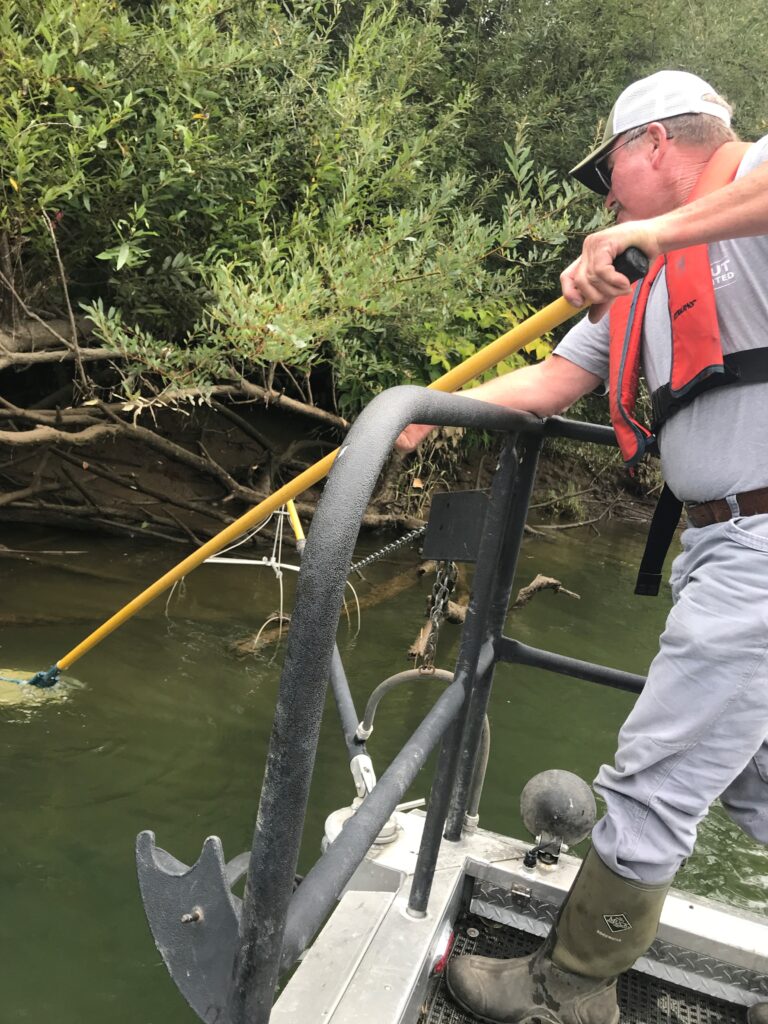
Above: Dean netting stunned fish
My son and I manned the long-handled fiberglass nets to retrieve the stunned fish. We activated the electrical field via a “toe-switch” mounted to the bow of the boat. Safety rails prevented us from falling overboard as we tried to quickly net fish only temporarily incapacitated by the electric shock. Once netted, we transferred the fish to the on-board live-well (where they quickly recover) while Gary expertly continued to maneuver the boat in and around streamside cover, placing the electrical probes into tight, brushy habitat favored by our target species.
Our efforts revealed the presence of smallmouth bass, largemouth bass, black crappie, brown bullhead, suckers, lamprey, adult and juvenile shad, fall chinook (one adult and one jack) as well as sea-run cutthroat trout and striped bass. We removed all the bass species as well as the crappie—all invasive—from the water. All the other species were released unharmed once they recovered from the stun of the electric current.
Altogether some 250 fish were removed from the Coquille that day, the vast majority of which were smallmouths. All of the fish removed were identified by species, measured, and recorded.
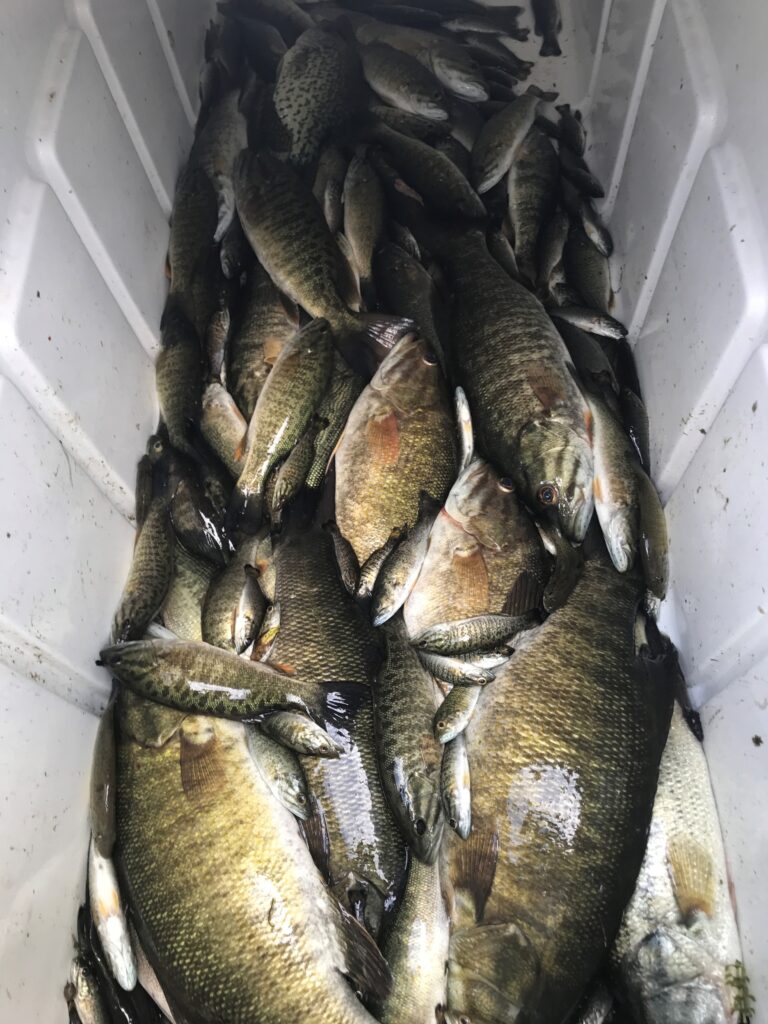
My son and I have volunteered at other times to help ODFW staff in their field work. We always come away with a deep appreciation for these dedicated professionals who work their tails off, often in difficult conditions, to sustain and improve our fisheries. Their efforts are not made any easier by those few folks (including some of our fellow anglers) who take it upon themselves to create or enhance a fishery by illegally putting non-native fish into our steelhead and salmon streams. The havoc this causes to the ecology of our rivers and lakes and the disastrous effects on native species cost all of us not only fishing opportunities, but millions in taxpayer revenue trying to “fix” the mess such actions create.
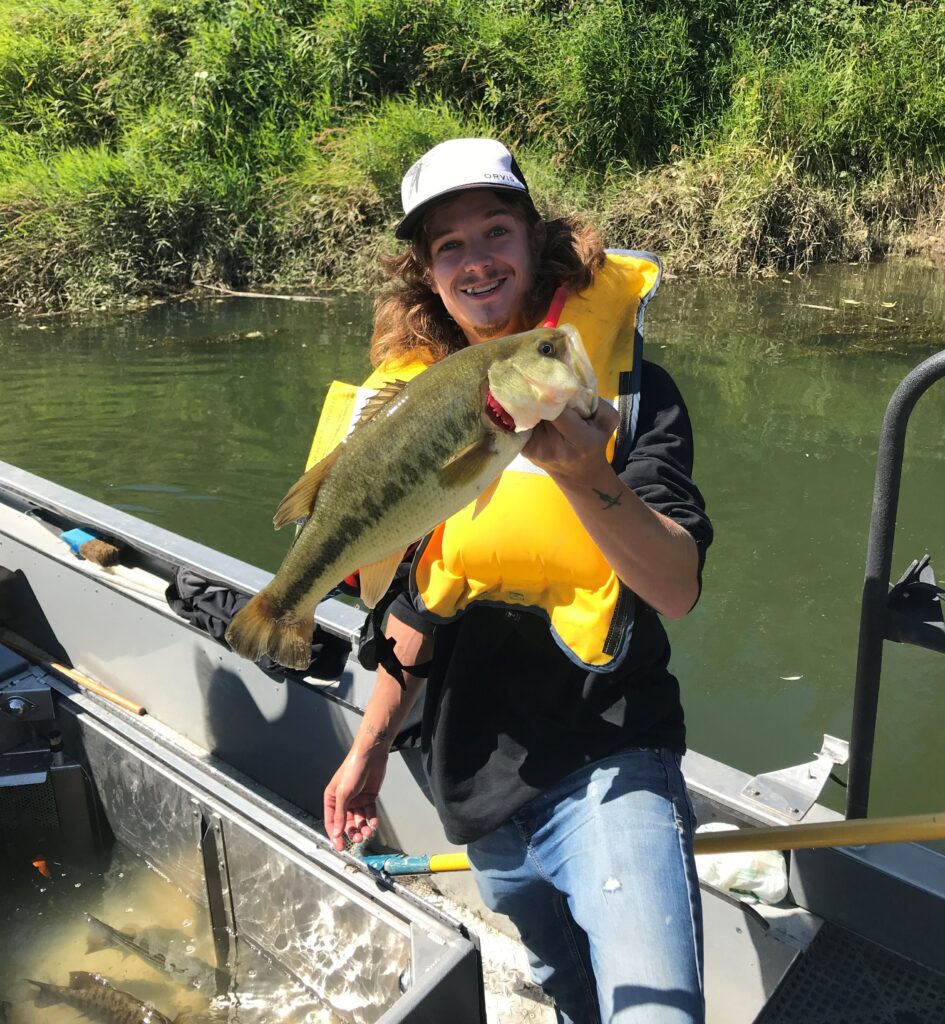
Let’s be clear: it is completely illegal for any person to put fish from one water body into another in Oregon without special permission or license from ODFW. I encourage anyone with information about illegal stocking of non-native fish to immediately report the details to the Oregon State Police game division or to ODFW.
On the Coquille, ODFW is trying to make lemonade by opening a novel spear fishery unique to this water. This fishery is intended to give interested spear fishermen an opportunity to fish the Coquille and to help reduce the invasive smallmouth bass population. If successful, this fishing opportunity could be expanded to other rivers also plagued with smallmouth bass. In the meantime, Wild Steelheaders encourages anglers to consider spear fishing the Coquille when conditions are too low and warm to feel good about fishing for trout or salmon, and applauds ODFW for considering a variety of options for reducing the impacts of non-native species on the fall chinook population in the Coquille.


